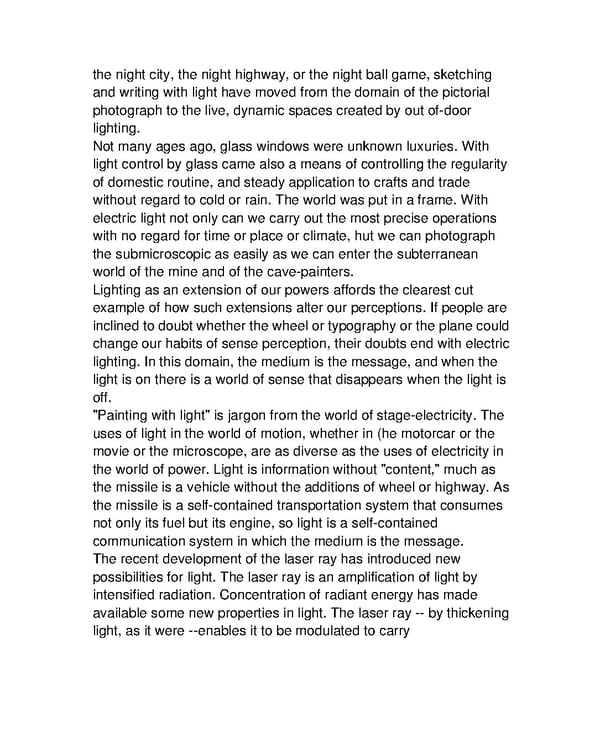the night city, the night highway, or the night ball game, sketching and writing with light have moved from the domain of the pictorial photograph to the live, dynamic spaces created by out of-door lighting. Not many ages ago, glass windows were unknown luxuries. With light control by glass came also a means of controlling the regularity of domestic routine, and steady application to crafts and trade without regard to cold or rain. The world was put in a frame. With electric light not only can we carry out the most precise operations with no regard for time or place or climate, hut we can photograph the submicroscopic as easily as we can enter the subterranean world of the mine and of the cave-painters. Lighting as an extension of our powers affords the clearest cut example of how such extensions alter our perceptions. If people are inclined to doubt whether the wheel or typography or the plane could change our habits of sense perception, their doubts end with electric lighting. In this domain, the medium is the message, and when the light is on there is a world of sense that disappears when the light is off. "Painting with light" is jargon from the world of stage-electricity. The uses of light in the world of motion, whether in (he motorcar or the movie or the microscope, are as diverse as the uses of electricity in the world of power. Light is information without "content," much as the missile is a vehicle without the additions of wheel or highway. As the missile is a self-contained transportation system that consumes not only its fuel but its engine, so light is a self-contained communication system in which the medium is the message. The recent development of the laser ray has introduced new possibilities for light. The laser ray is an amplification of light by intensified radiation. Concentration of radiant energy has made available some new properties in light. The laser ray -- by thickening light, as it were --enables it to be modulated to carry
 Understanding Media by Marshall McLuhan Page 143 Page 145
Understanding Media by Marshall McLuhan Page 143 Page 145